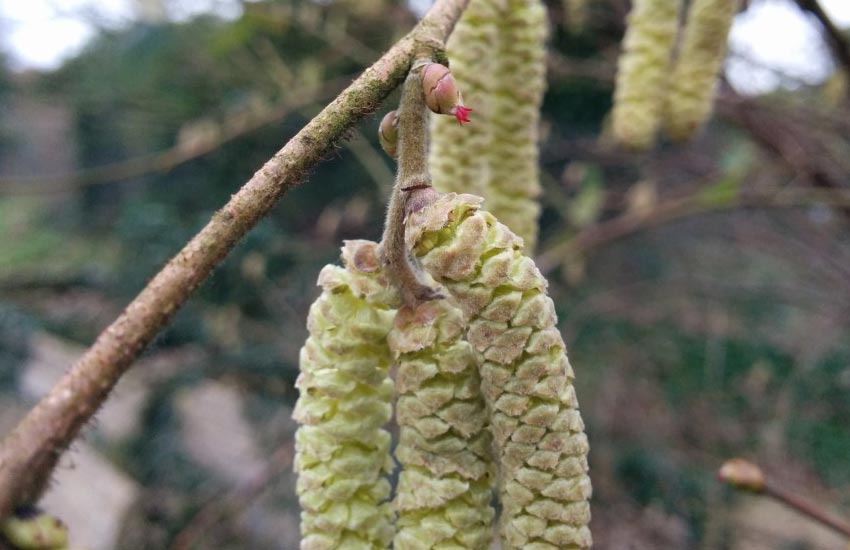This month you will see catkins out in force on hazel trees.
Before very much else is coming out of Winter dormancy these male flowers hang from the branches in great clusters shedding their pollen granules by the billion. From a foraging point of view this is really useful because if you take a note of where you see the catkin laden trees now then in the Autumn going and collecting the nuts becomes far easier. It's then just a matter of going back to the locations that you carefully noted in late-Winter rather than trying to spot the nuts in amongst the foliage of the tree. To get any of the hazelnuts you also need to try and beat the squirrels to them and this is the perfect way to use a bit of human intelligence to get one up on those nut hoarding little rodents.
Perhaps less obvious than the catkins are the female flowers. In fact they are barely noticeable and while the male flowers get a special name all to themselves I'm not aware of the female flowers having a similar term. Once you find a hazel tree get up close and have a look for the female flowers; they don't open up and emerge until the catkins are shedding their pollen. Then you are looking for a tiny little cluster of bright red 'hairs' (they are in fact the styles of the flower) emerging from a bud. Often you can find them at the base of a cluster of catkins and at the tips of the branches.
These diminutive little flowers catch the pollen granules (the styles are sticky) which are floating around on the Winter winds in huge invisible clouds. Then the miracle of pollination occurs: the pollen granule effectively hatches and sends a long tube down into the ovary. The flower is pollinated and the nuts can begin to form. So those tiny little flowers which would otherwise go unnoticed eventually become the nuts that we hope to harvest at the end of Summer; so as they don't seem to have been given a name already I think that we should start to call them nutkins! If the tree has a lot of female flowers then you can also mark it down as one which is likely to have a good crop of nuts, conversely if it doesn't have many female flowers then it might not produce very much.
With any plant or tree which you are learning about and getting to know it's always good practice to observe it right through the seasons. Having now identified your hazel trees be sure to go back at points to look at the leaves as they emerge and to watch the nuts develop, then in the early Winter (when the leaves have fallen) go back and have a look at the form of the tree and the bark so that you can become comfortable with identifying hazel at any time of year.

